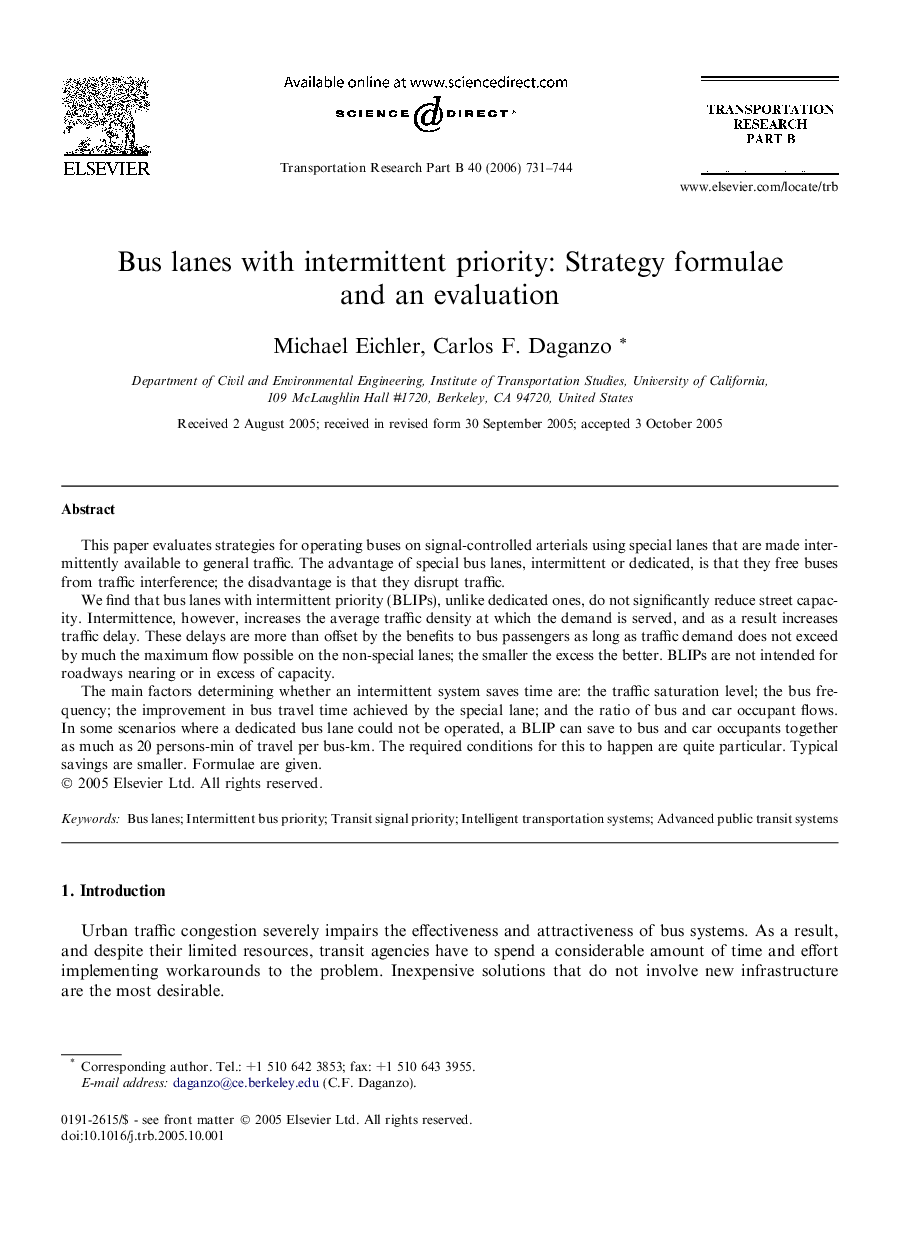| کد مقاله | کد نشریه | سال انتشار | مقاله انگلیسی | نسخه تمام متن |
|---|---|---|---|---|
| 1133028 | 955845 | 2006 | 14 صفحه PDF | دانلود رایگان |

This paper evaluates strategies for operating buses on signal-controlled arterials using special lanes that are made intermittently available to general traffic. The advantage of special bus lanes, intermittent or dedicated, is that they free buses from traffic interference; the disadvantage is that they disrupt traffic.We find that bus lanes with intermittent priority (BLIPs), unlike dedicated ones, do not significantly reduce street capacity. Intermittence, however, increases the average traffic density at which the demand is served, and as a result increases traffic delay. These delays are more than offset by the benefits to bus passengers as long as traffic demand does not exceed by much the maximum flow possible on the non-special lanes; the smaller the excess the better. BLIPs are not intended for roadways nearing or in excess of capacity.The main factors determining whether an intermittent system saves time are: the traffic saturation level; the bus frequency; the improvement in bus travel time achieved by the special lane; and the ratio of bus and car occupant flows. In some scenarios where a dedicated bus lane could not be operated, a BLIP can save to bus and car occupants together as much as 20 persons-min of travel per bus-km. The required conditions for this to happen are quite particular. Typical savings are smaller. Formulae are given.
Journal: Transportation Research Part B: Methodological - Volume 40, Issue 9, November 2006, Pages 731–744